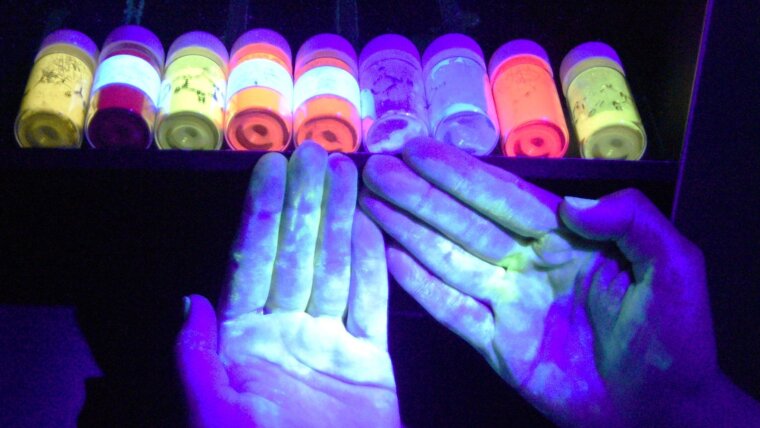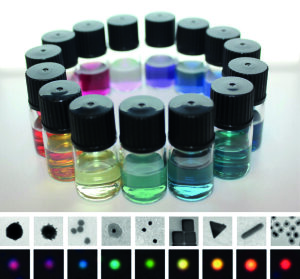
Prof. Wolfgang Fritzsche.
Image: Sven Döringapl. Prof. Dr. Wolfgang FRITZSCHE
Email: fritzsche@ipht-jena.de
Phone: +49 3641-2-06304
Apl. Prof. Dr. Wolfgang Fritzsche is head of the Department Nanobiophotonics at the Leibniz-Institute of Photonic Technology (Leibniz-IPHT).
Research Areas
The Nanobiophotonics group develops innovative methods for molecular detection based on the optical properties of plasmonic nanoparticles in combination with molecular components. This so-called Molecular Plasmonics includes passive approaches, such as the development of optical markers, and is focused on application of plasmon nanostructures for bioanalytics. On the other hand, in active plasmonics, plasmonic effects are used to manipulate biomolecules or for catalysis.
- Passive Molecular Plasmonics: LSPR (localized surface plasmon resonance)-based bioanalytics
- Active Molecular Plasmonics: plasmonic (nano)manipulation
Teaching Fields
Dr. Fritzsche is involved in teaching Physical Chemistry as well as Instrumental Analytics for pharmacists, Optical Sensors/Microfluidics in the master‘s degree programme Medical Photonics, and Nanobiophotonics in the master‘s degree programme Chemistry of Materials.
Research Methods
- Colloidal metal-nanoparticles, hybrid plasmonic nanostructures and plasmonic microarrays
- Molecular techniques: self-assembly monolayers, biofunctionalization and conjugation of nanoparticles and nanostructures
- (Imaging) spectroscopy of single plasmonic nanostructures and microarrays
- Scanning Force Microscopy
- Micro/nanointegration
- Nanobiomanipulation (laser-irradiation of plasmonic antennas for manipulation of biomolecules) and plasmonic catalysis
- DNA and protein detection using LSPR sensorics
Plasmonic nanoparticles in spectral range UV-NIR, available at the Fritzsche Group.
Picture: Fritzsche research group.Recent Research Results
The group’s research is focused on molecular plasmonics, as the interaction between molecular structures and metal nanostructures, and nanooptics. The main applications are in bioanalytics, where metal nanoparticles provide a label-free and quite sensitive detection using its property of localized surface plasmon resonance (LSPR). Besides composition, size and shape of the nanoparticle, the LSPR is also influenced by the refractive index of the surrounding matrix. Therefore, measurements of the shift of the LSPR wavelength allow for monitoring processes like biomolecular binding events at the level of individual gold nanoparticles. Nanoparticles of various materials, sizes and shapes are synthesized as well as characterized regarding structural and optical/spectroscopic properties, also at the single particle level. A variety of surface modification techniques including surface silanization have been established in order to bind these particles onto certain surfaces (chip substrates, but e.g. also inside hollow glass fibers), and to attach biomolecules, such as DNA or proteins. DNA nanotechnology is utilized to generate larger (>100 nm) superstructures (DNA origami) in order to allow for a more defined relative positioning of plasmonic particles and fluorophores. On the technical side, developments for a multiplexed readout of plasmonic properties of nanoparticles, to be realized by an imaging spectrometer based on a Michelson interferometer principle, are under way. Besides analytics, the interaction of laser light with particles is investigated regarding a manipulation of molecules (DNA) on a sub-molecular level, like DNA-restriction. An interesting effect was thereby discovered, which is based on electrons leaving the nanoparticle when excited by fs-laser pulses, and the transfer of this excitation along DNA nanowires over several micrometers. It clearly exceeds the generally accepted electron conductance of DNA of a few (maybe tens) of the nanometers, and is still the focus of ongoing investigation.
[1] Wirth et al., Nano Lett. 11, 1505 (2011).
[2] Wirth et al., Nano Lett. 14, 570 (2014).
[3] Wirth et al., Nano Lett., 14, 3809 (2014).

